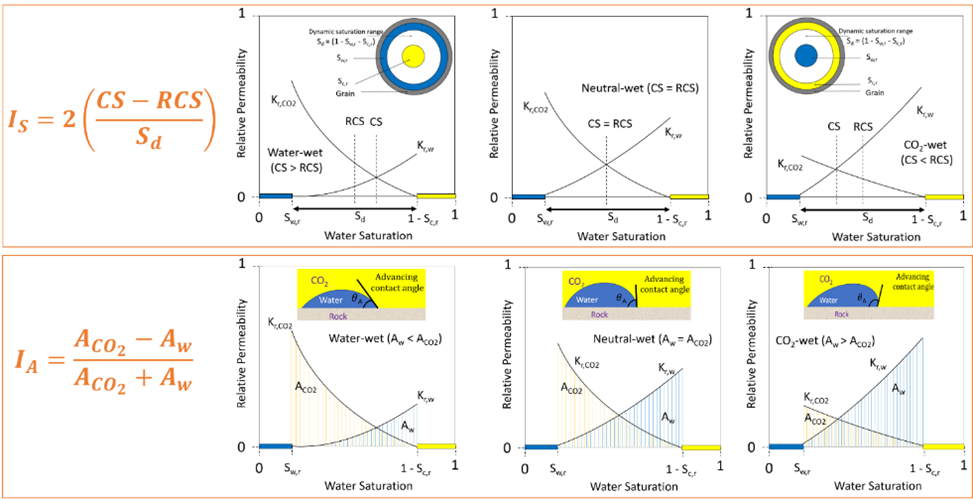Evaluating Rock Wettability in CO2-Water Systems using Relative Permeability Data: Implications for Geologic CO2 Sequestration in Saline Aquifers
Abouzar Mirzaei-Paiaman, Jerry L. Jensen, and Sheng Peng
Geoenergy Science and Engineering, 257, Part A, 2026, 214228 https://doi.org/10.1016/j.geoen.2025.214228
Study Summary

Wettability of the reservoir rock plays a crucial role in CO2 sequestration in saline aquifers. We present two methods to determine rock wettability in CO2–water systems by analyzing water-displacing CO2 relative permeability data. Wettability was evaluated from 33 tests across sandstones, carbonates, and shales, showing a range of CO2-wet to water-wet states that generally align with reported contact angle measurements. A key observation is that simpler water–oil systems used as proxies may not reliably represent CO2–brine behavior, as they often remain water-wet due to cleaning procedures and the use of fluids that do not alter wettability during the experiment, even when viscosity ratios and interfacial tensions are matched. While uncertainties remain due to sampling origin (e.g., outcrop versus subsurface) and laboratory cleaning procedures, the ability to derive wettability directly from relative permeability data offers a practical advantage, as such measurements are more accessible than reliable contact angle data. This enables more robust interpretation of multiphase flow behavior, supporting improved assessments of CO2 storage capacity, injectivity, and long-term containment. The approach presented in this research for inferring wettability from relative permeability data is not limited to CO2–brine systems. It can also be applied to other systems, such as water displacing hydrogen sulfide (H2S) in acid gas storage or water displacing hydrogen in underground hydrogen storage (UHS).
Why is this research important and why do the results matter?
- The new methods provide insights into rock wettability behavior during CO2 storage in saline aquifers (CCS).
- Wettability was evaluated across sandstones, carbonates, and shales, showing a range of CO2-wet to water-wet states.
- Simpler water–oil systems used as proxies may not reliably represent CO2–brine behavior, as they often remain water-wet due to cleaning procedures and the use of fluids that do not alter wettability during the experiment.
- Our approach can also be applied to other systems, such as water displacing hydrogen sulfide (H2S) in acid gas storage or water displacing hydrogen in underground hydrogen storage (UHS).
Link(s)
Mirzaei-Paiaman, A., Jessen, J., and Peng, S. 2026. Evaluating Rock Wettability in CO2-Water Systems Using Relative Permeability Data: Implications for Geologic CO2 Sequestration in Saline Aquifers. Geoenergy Science and Engineering. 257, 214228. https://doi.org/10.1016/j.geoen.2025.214228